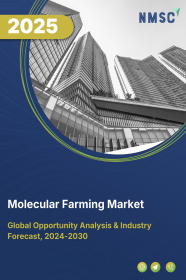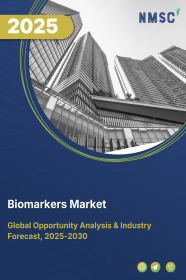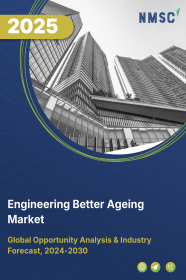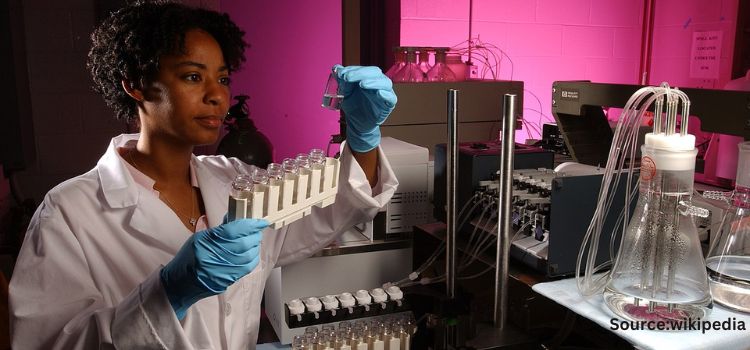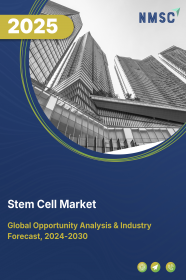
Stem Cell Market by Cell Type (Adult Stem Cell, Embryonic Stem Cell (ESCs), Mesenchymal Stem Cells (MSCs), Induced Pluripotent Stem Cells (iPSCs), and Others), by Source (Autologous and Allogenic), by Treatment Type (Allogeneic Stem Cell Therapy, Auto logic Stem Cell Therapy, Syngeneic Stem Cell Therapy, and Others), by Technology (Cell Acquisition, Cell Production, Cryopreservation, Expansion, Sub-Culture, and Others) – Global Opportunity Analysis and Industry Forecast 2023-2030
US Tariff Impact on Stem Cell Market
Trump Tariffs Are Reshaping Global Business
Market Definition
The global Stem Cell Market size was valued at USD 13.70 billion in 2022 and is predicted to reach USD 37.15 billion by 2030 with a CAGR of 15.3% from 2023-2030.
Stem cells are versatile and essential cellular components that underpin biological development and maintenance, characterized by their unique capability to self-renew and generate both specialized cells and identical stem cells. Stem cells can differentiate into many different cell types, which allows them to form tissues and organs throughout an organism's life. This process is essential for growth, repair, and rejuvenation. Stem cells are involved in embryonic development and postnatal tissue regeneration, and they have the potential to be used therapeutically in regenerative medicine. Stem cells are used in research to understand diseases and in regenerative therapies to treat various medical conditions. As the body's foundational building blocks, they help to maintain and replace specialized cells, ensuring the proper functioning of bodily systems.
Market Dynamics and Trends
Increasing prevalence of chronic diseases such as cancer, neurological and cardiovascular disorders in the countries such as U.S., India, Brazil, and others lead to an increased demand for innovative & better medicines for treatment including stem cell therapy drives the growth the market.
According to the latest report published by the American Cancer Society, over 1.9 million new cases of cancer are projected to occur in the U.S. by the end of 2023. As cancer continues to be a major global health challenge, there is a growing emphasis on innovative approaches to treatment and therapies including stem cells for developing personalized and effective treatments.
Moreover, the rising adoption of stem cells in producing regenerative medicines that are used in the treatments of injured tissue in the brain, spinal cord, and nerves is expected to further propel the growth of the market.
For instance, in August 2023, researchers from City University of Hong Kong and The University of Hong Kong made a breakthrough in the treatment of spinal cord injuries by using genetically modified human neural stem cells (hNSCs). Their study showed that precise modulation of gene expression in hNSCs can help to repair damaged neural circuits, which could potentially lead to new treatments for restoring movement in people with spinal cord injuries.
In addition, growing R&D efforts by research institutes to develop stem cell therapies and the rising approvals for clinical trials in stem cell research across countries have led to the greater utilization of stem cells.
For instance, in April 2021, Sloan Kettering Institute scientists discovered a new gene, called QSER1, which helps to understand the mechanisms of gene regulation as well as the physiological impact of dysregulation.
However, high cost of stem cell therapies and lack of awareness among the population about the treatment options are the factors that are expected to restrain the stem cell market growth during the forecast period.
On the contrary, advances in microfluidics and lab-on-a-chip systems, along with the integration of organoids and 3D bioprinting, are creating new opportunities for studying and manipulating stem cells in controlled settings. These advances could also facilitate the development of functional human tissues and organs for transplantation.
For instance, in June 2023, NIHR Great Ormond Street Hospital Biomedical Research Centre in London partnered with the University of Padova in Italy to use 3D printing technology to develop hydrogel-grown mini-organs. The collaboration aims to improve the accuracy of cell and organ studies, create realistic disease models, and advance understanding of processes such as cancer metastasis. This could have implications for organoid science, which involves developing micro-versions of organs for study and disease modeling.
Market Segmentations and Scope of the Study
The stem cell market report is segmented on the basis of cell type, source, treatment type, technology, application, end user and region. On the basis of cell type, the market is divided into adult stem cell, embryonic stem cells (ESCs), mesenchymal stem cells (MSCs), induced pluripotent stem cells (iPSCs), and others. On the basis of source, the market is classified into autologous and allogenic. On the basis of treatment type, the market is categorized into allogeneic stem cell therapy, auto logic stem cell therapy, syngeneic stem cell therapy, and others.
On the basis of technology, the market is bifurcated into cell acquisition, cell production, cryopreservation, expansion, sub-culture, and others. On the basis of application, the market is further divided into regenerative medicines and drug discovery & development. Regenerative medicines are further sub divided into neurology, oncology, cardiology, and others. On the basis of end user, the market is segmented into hospitals, pharmaceutical & biotechnology companies, academic & research institutes, and others. Regional breakdown and analysis of each of the aforesaid segments includes regions comprising of North America, Europe, Asia-Pacific, and RoW.
Geographical Analysis
North America holds the dominant share of stem cell market at present and is expected to continue its dominance during the forecast period. This is attributed to growing government investments in R&D activities for the introduction of novel therapies and drugs in this region.
For instance, in April 2021, federal government announced a USD 45 million investment over three years in the Stem Cell Network as part of its 2021 budget plan, "A Recovery Plan for Jobs, Growth, and Resilience." The funding will support high-quality health research to develop knowledge, therapies, and technologies that can benefit people suffering from chronic diseases and severe illnesses.
In addition, the presence of major key players such as Thermo Fisher Scientific, NuVasive, Inc, BrainStorm Cell Therapeutics and Lineage Cell Therapeutics that are developing new therapies further boosts the market growth in this region.
For instance, in January 2021, Thermo Fisher Scientific introduced a new medium for cell therapy, T-Cell medium for the developers using allogenic workflows. This is the first media solution that targets the metabolism of healthy donor cells, making it ideal for use in allogeneic commercial cell therapy production.
On the other hand, Asia-Pacific is expected to show a steady rise in the stem cell market share due to the growing prevalence of chronic diseases such as cancer, heart diseases and diabetes among the emerging population, driving the demand for efficient treatments including stem cell therapies in this region.
According to the latest report published by International Agency for Research on Cancer, Asia-Pacific reported 9,503,710 new cancer cases and accounts for 5,809,431 deaths due to cancer in 2020.
Moreover, rising initiatives and investments activities taken by the government to support the R&D activities of stem cell boost the market growth in this region. For instance, in February 2022, the Government of India announced the establishment of state-of-the-art stem cell research facilities in 40 leading health research and educational institutions across the country. The investment of around USD 1 million by the Indian Council of Medical Research (ICMR) will support research activities in India.
Competitive Landscape
Various market players operating in the stem cell industry includes Thermo Fisher Scientific, Merck KGaA, Lonza Group, STEMCELL Technologies, Takara Bio, FUJIFILM Cellular Dynamics, Sartorius AG, GE Healthcare, Charles River Laboratories International, Cynata Therapeutics, Mesoblast, Cellular Dynamics International, Osiris Therapeutics, Gamida Cell, Pluristem Therapeutics, Lineage Cell Therapeutics, Brainstorm Cell Therapeutics, Cellectis, Ncardia AG, and Smith & Nephew among others.
These market players are adopting various strategies such as product launches and investments in businesses across various regions to maintain their dominance in the stem cell market. For instance, in March 2022, Lineage Cell Therapeutics, Inc. announced the introduction of an auditory neuronal cell transplant for the treatment of hearing loss, with a focus on auditory neuropathy spectrum disorders (ANSD). The treatment involves the transplantation of auditory neuronal progenitors, which are cells that have the potential to develop into auditory neurons.
In addition, in February 2021, BrainStorm Cell Therapeutics acquired new Brazilian patent for creating their special treatment, NurOwn.. This patent bolsters the company's intellectual property portfolio and further solidifies its position in the field of cell-based therapies for neurodegenerative diseases.
Key Benefits
-
The report provides quantitative analysis and estimations of the stem cell market from 2023 to 2030, which assists in identifying the prevailing market opportunities.
-
The study comprises a deep-dive analysis of the stem cell market including the current and future trends to depict prevalent investment pockets in the market.
-
Information related to key drivers, restraints, and opportunities and their impact on the stem cell market is provided in the report.
-
Competitive analysis of the players, along with their market share is provided in the report.
-
SWOT analysis and Porters Five Forces model is elaborated in the study.
-
Value chain analysis in the market study provides a clear picture of roles of stakeholders.
Stem Cell Market Key Segments
By Cell Type
-
Adult Stem Cell
-
Embryonic Stem Cell (ESCs)
-
Mesenchymal Stem Cells (MSCs)
-
Induced Pluripotent Stem Cells (iPSCs)
-
Others
By Source
-
Autologous
-
Allogenic
By Treatment Type
-
Allogeneic Stem Cell Therapy
-
Auto logic Stem Cell Therapy
-
Syngeneic Stem Cell Therapy
-
Others
By Technology
-
Cell Acquisition
-
Cell Production
-
Cryopreservation
-
Expansion
-
Sub-Culture
-
Others
By Application
-
Regenerative Medicines
-
Neurology
-
Oncology
-
Cardiology
-
Others
-
-
Drug Discovery & Development
By End User
-
Hospitals
-
Pharmaceutical & Biotechnology Companies
-
Academic & Research Institutes
-
Others
By Region
-
North America
-
The U.S.
-
Canada
-
Mexico
-
-
Europe
-
The UK
-
Germany
-
France
-
Italy
-
Spain
-
Denmark
-
Netherlands
-
Finland
-
Sweden
-
Norway
-
Russia
-
Rest of Europe
-
-
Asia-Pacific
-
China
-
Japan
-
India
-
South Korea
-
Australia
-
Indonesia
-
Singapore
-
Taiwan
-
Thailand
-
Rest of Asia-Pacific
-
-
RoW
-
Latin America
-
Middle East
-
Africa
-
Key Players
-
Thermo Fisher Scientific
-
Merck KGaA
-
Lonza Group
-
STEMCELL Technologies
-
Takara Bio
-
FUJIFILM Cellular Dynamics
-
Sartorius AG
-
GE Healthcare
-
Charles River Laboratories International
-
Cynata Therapeutics
-
Mesoblast
-
Cellular Dynamics International
-
Osiris Therapeutics
-
Gamida Cell
-
Pluristem Therapeutics
-
Lineage Cell
-
Brainstorm Cell Therapeutics
-
Cellectis
-
Ncardia AG
-
Smith & Nephew
REPORT SCOPE AND SEGMENTATION:
|
Parameters |
Details |
|
Market Size in 2022 |
USD 13.70 Billion |
|
Revenue Forecast in 2030 |
USD 37.15 Billion |
|
Growth Rate |
CAGR of 15.3% from 2023 to 2030 |
|
Analysis Period |
2022–2030 |
|
Base Year Considered |
2022 |
|
Forecast Period |
2023–2030 |
|
Market Size Estimation |
Billion (USD) |
|
Growth Factors |
Increasing prevalence of chronic diseases such as cancer, neurological and cardiovascular disorders. The rising adoption of stem cells in producing regenerative medicines for the treatments of injured tissues. Growing R&D activities. |
|
Countries Covered |
28 |
|
Companies Profiled |
10 |
|
Market Share |
Available for 10 companies |
|
Customization Scope |
Free customization (equivalent up to 80 working hours of analysts) after purchase. Addition or alteration to country, regional, and segment scope. |
|
Pricing and Purchase Options |
Avail customized purchase options to meet your exact research needs. |

















 Speak to Our Analyst
Speak to Our Analyst



